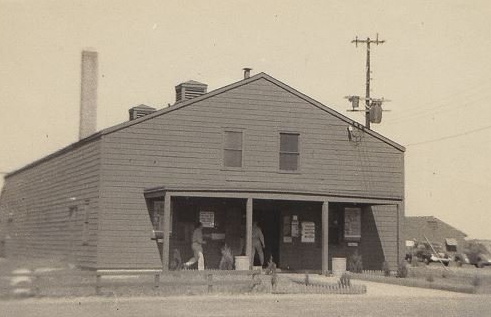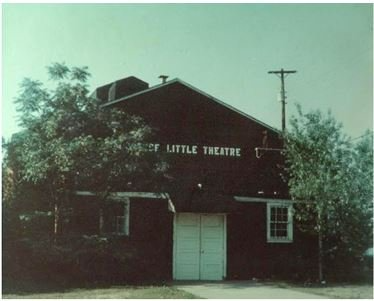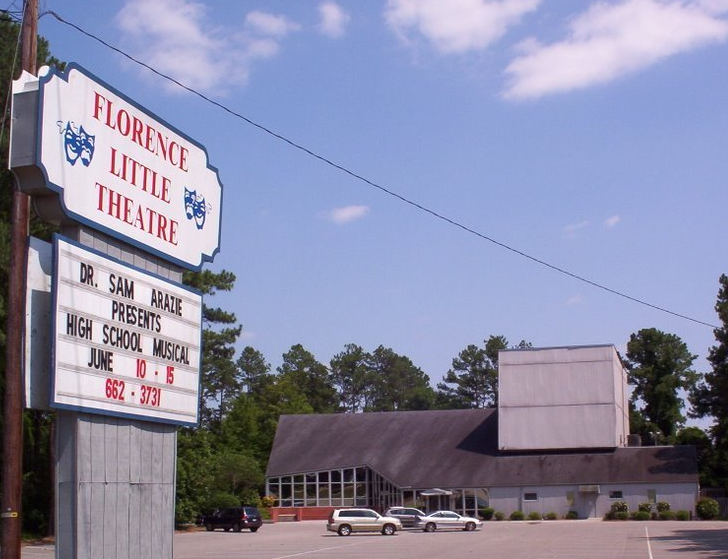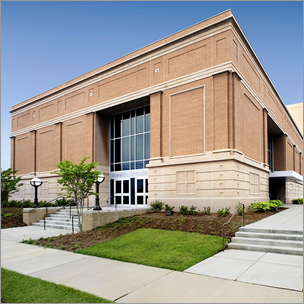Florence Little Theatre
Address
417 South Dargan Street
Florence, South Carolina 29506
Phone & Email
Email: Box Office
Mission, Vision, and Recognitions
Mission and Vision
Mission
The mission of the Florence Little Theatre is to provide excellence in theatrical entertainment and education in a safe and respectful environment while encouraging community involvement and support.
Vision
Our vision is to encourage community involvement by providing volunteer opportunities and education for all ages thereby ensuring a diverse volunteer group. We will maintain good stewardship of resources to protect the integrity of the theatre. Florence Little Theatre is committed to celebrating the diversity and talents of the community.
Awards and Recognitions
2020 Florence Regional Arts Alliance Outstanding Arts Organization Award,
Children's Workshop Lisa Sims
2014 South Carolina Theatre of Distinction Award
2014, 2012 Best Costumes SCTA
2014, 2012 Best Actress SCTA
2014 Best Solo Musical Theatre Performance SCTA
2014 Best Cameo Performance SCTA
2013 South Carolina Arts Alliance Award
2005 Elizabeth O'Neill Verner Award
2000 Lifetime Service Award- Jeff Corbin, Jr.
History of FLT
When the celebrated musical “Les Miserables” opened at Florence Little Theatre September 2013, it was being performed for the first time by a community theater group in South Carolina.
It possibly was the first time FLT had a show’s run sell out in advance, and there were disappointed people who were unable to get tickets for any of the nine performances. The fact that the rights had been granted to the theater indicated the reputation FLT has earned over nearly a century. Everybody wanted the show, and this theater was the first S.C. community theater to perform it.
The “Les Miz” audiences saw the show in the still-new $10 million theater building that FLT occupied in 2008. They saw professional-looking lighting and amplification equipment and professional sets. Performers were helped by real costuming and cosmetology areas, a fine rehearsal hall where they worked on the show for months and shops to develop sets and props.
One might wonder what the people who turned out for the first performance of FLT’s predecessor in 1923 would think if they could see the theater’s work now. In 1923 they called themselves the Community Players, and Margaret Wright was a key to forming the group that staged its first performance on the lawn of James M. Lynch on West Palmetto Street. Surely they could not have dreamed what they would be 90 years later.
The Community Players soon became the Pinewood Players when that club offered its Five Points area building for productions, and they kept that name even after the club burned and the theater resumed wandering.
They performed in a lot of places around town over the years, overcoming the fact that most were not really suitable for theatrical productions. Shows were put on outdoors, at least once in an abandoned garage behind a downtown hotel and in the Florence High School and old YMCA auditoriums.
Once was in the back yard of Sanborn Chase’s residence on Spruce Street. They put on a play beside the backyard pool, and according to some old timers, on closing night the cast threw the villain into the pool. This was not in the script, but what one might call an ad lib. (That house became the site of the Florence Museum for about 55 or 60 years.)
Besides their vagrant status, these theater-minded people had determination and kept going despite a couple of times when world events turned out the lights. One in the 1930s was the Great Depression which saw the theater inactive for a few years, and the other was World War II.
Some young people who had a taste for theater are credited with sparking a revival of the theater for a brief period from 1939 until U.S. entry into WWII stopped them again. The war effort took many young people away, making it more difficult for the theater to cast and organize crews. During that short revival period, the name was changed to Little Theatre Guild.
That was the last shutdown, because in 1947, a couple of years after the war, the most serious effort at organization occurred. An interested group got together, adopted bylaws and decided it was necessary for the Florence Little Theatre to have a permanent home and not have to search for a place to perform each show. Officers elected were George Glass, Sylvia Stein and Mary King.
Their quest for a home was successful. The Florence Army Air Base which had been an Army Air Force training facility, was abandoned soon after the war. Among the buildings they left behind was a small movie house that FLT obtained. It was far from ideal for live theater but now they could claim their own home. That sparked the momentum that really made FLT.
Many stories are told about the shortcomings of the airport theater, but it gave the group a chance to really develop. One of the favorite memories is that the restroom toilets could not be flushed during a performance because the noise could be heard all over the place. It is said that people who did not feel they could wait until intermission or the end of the show had an option of resorting to the outdoors. Well, anyway there was little else around the little building then and a small patch of woods was across the road.
There was no real backstage space. The only dressing room was divided by a hanging blanket separating male and female performers. Nobody admitted to peeping. There was so little backstage space that the back wall of the building was the back of the set, so there was no way to go off on one side of the stage and reenter on the other except by going around outside the building. On some nights it meant getting wet.
It is said that sometimes dance scenes were rehearsed outside on the seldom-traveled airport street while another scene rehearsed on stage. One favorite story from all FLT histories is of Carter Byrd handling the primitive sound system one night. There was a spot where seagulls’ cries were cue to the next line, and his equipment failed. After an awkward delay while actors waited for their cue, Carter jumped from behind a curtain, yelled “Seagulls! Seagulls!” The actors took their cue and all went well thereafter.
So the little airport building had its shortcomings, but it was there that the theater gained much momentum. In the late 1950s they decided to try Broadway musicals, although the stage was very small, and they barely had room to squeeze Blanche Atwill and the piano in between the front row and the base of the stage. An actual orchestra was out of the question. The first such musical was “Pajama Game.” It was well received and others followed, increasing the organization’s audience.
FLT had about 20 successful seasons at the airport theater, but it now had the momentum to think bigger. An important moment was a meeting in the 1960s of Ronald Sopkin, Joe Baroody, Phil Stephenson and Jeff Corbin. There was no doubt that a better building was needed, and they felt the theater could have one, so a fund-raising drive was launched.
An anonymous donor gave the theater a site on South Cashua Drive and they raised $160,000. Ground was broken in January, and they planned a November opening for the first show. The new building had actual wing space, room to work on sets and store things. They had real dressing rooms, the stage was big enough for musicals, and there was an orchestra pit. It was a huge step up from the airport facilities.
On Nov. 14, 1968, “The King and I” opened on Cashua, and Gov. Robert E. McNair was present. It was a hugely successful night, and FLT settled in for a 40-year run there. An extra piece of drama occurred before the opening when it was learned that the company supplying the seats could not get them here in time. Ronald Sopkin sent trucks from his Wentworth Manufacturing Co. to Texas to pick them up, and the final ones went in on opening day.
Along the way, the theater established awards which are decided by members of the Guild, people who have done a certain level of volunteer work for the theater. They are presented in a special ceremony each spring and are called Irvings. Since moving to Cashua, the theater was used for events other than its own productions. Dance recitals often were staged, the theater several times housed the Miss Southern 500 Pageant, and political gatherings were held there. After St. Anthony Catholic Church burned in 1970, the church held services there for about three years, winning the priest an Irving for “the longest run at FLT.”
On Cashua FLT gained greater support from the community, and during that time it received the Elizabeth O’Neill Verner Award from the S.C. Arts Commission, the state’s top arts award. The award was named for a Charleston artist who made it into her nineties, getting wide acclaim as an artist and as spokeswoman for the arts. It now is displayed in a place of honor in the splendid lobby on South Dargan. A delegation from the theater received the award in a ceremony at the State House.
Nice as the Cashua theater was, it had its problems. One was cramped public restrooms creating long lobby lines that sometimes delayed second act curtains. Storage and work space for sets were limited, and the theater in a sense was still a vagrant. They had to search for borrowed rehearsal space while the previous show occupied the stage.
Plans were being tossed about for enlargement and remodeling of the Cashua site when the Drs. Bruce and Lee Foundation offered $10 million to build a new theater on South Dargan Street. The city and McLeod Health also made contributions, and the new FLT became one of the dramatic arts and education landmarks made possible by Bruce-Lee.
Like Cashua, the present FLT house was another big step forward. Plenty of dressing room and storage space were made available with better technical, lighting and sound equipment along with much larger restroom facilities. There was great anticipation when rehearsals started for “Jesus Christ Superstar” in the Cashua house in 2008. Everybody knew when the show opened it would be in the new theater on South Dargan. At the last Cashua show Shaw Thompon had drawn cheers when he closed the show by telling the audience, “See you next season on South Dargan!”
The present theater is more versatile. It is used for special events and the courtyard and rehearsal hall make a good place for receptions, a source of revenue. Not least important is that events like opening night parties can be staged at the theater instead of participants having to leave the show and go to another site for the party. One veteran from the 1940s to ‘60s said the present set shop is about the size of the little airport theater building.
Over the years FLT has developed a number of activities besides its regular schedule of Broadway-type shows. There are youth productions. There are the Schoolhouse Players, adults who give shows for school children. Many kids influenced by these programs have become adult FLT volunteers. The FLT Friends is an example of the volunteerism that has fed energy into the theater for generations. It is a women’s organization that furnishes volunteers for various duties and greatly helps with fundraising.
It can’t happen, of course, but it would be nice to have the 1923 founders of the theater drop by on South Dargan. Surely they would be proud of what they started, and surely the present FLT would love to show them around.




